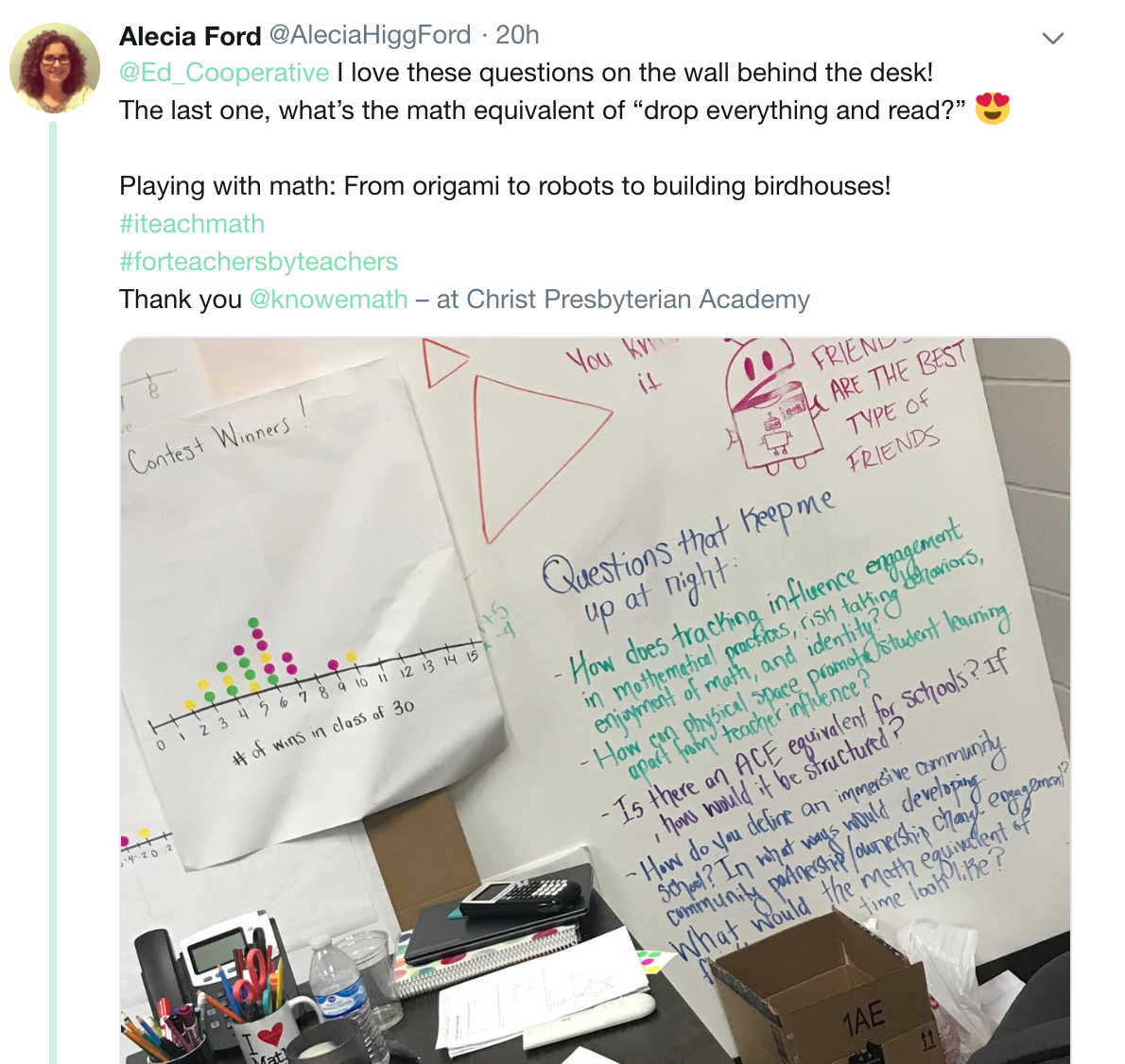|
Drop Everything and Math
I saw this tweet from my friend Alecia Ford (@AleciaHiggFord) talking about how Madison Knowe (@knowemath) had a list of questions in her classroom and the last question was “What would the math equivalent of drop everything and read time look like?”

This has been a question on my mind a lot this year as we implemented “silent sustained reading” (SSR) time in my school. I was a little jealous and have been considering ways that we could potentially help students have this same relationship with math. So I posed the question back to Alecia. This was her response:

Then Madison weighed in with the ways she has been trying to incorporate it more in her own classroom with this tweet:

I love the idea of a “math play toolbox” and having games and puzzles as well as math books. And then Joel (@joelbezaire) offered up a newsletter from Kent Haines (@KentHaines) and a few games (Cat Stack and Manifolds) to pick up as a starting point.

How about y’all? What strategies have you tried to be able to have “drop everything and math” time as part of your school day? How do your students respond to this idea?
Amber Thienel
@amberthienel
[Editor’s Note: If you want to read more on the phrase “drop everything and math,” check out this Tracy Zager’s (@TracyZager) post.] |